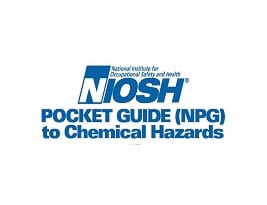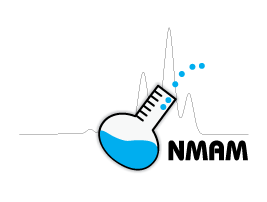Formaldehyde

Overview
CAS No. 50-00-0
Formaldehyde (CH₂O) is a colorless, highly toxic, and flammable gas at room temperature. It is used in the production of fertilizer, paper, plywood, and some resins. It is also used as a food preservative and in household products, such as antiseptics, medicines, and cosmetics. Exposure to formaldehyde can irritate the skin, throat, lungs, and eyes. Repeated exposure to formaldehyde can possibly lead to cancer. Workers may be harmed by exposure to formaldehyde. The level of exposure depends upon the dose, duration, and work being done.
Formaldehyde is used in many industries. It’s used in glues and resins, dyes, textiles, disinfectants, building materials, automobile parts, embalming, and laboratories. Some examples of workers at risk of being exposed to formaldehyde include the following:
- Agricultural workers who work in confinement livestock production
- Construction workers who work with resin manufactured products
- Workers who manufacture plastics, resins and foam insulation
- Morticians in the embalming process
- Beauticians who apply dyes and smoothing products
NIOSH recommends that employers use Hierarchy of Controls to prevent injuries. If you work in an industry that uses formaldehyde, please read chemical labels and the accompanying Safety Data Sheet for hazard information. Visit NIOSH’s page on Managing Chemical Safety in the Workplace to learn more about controlling chemical workplace exposures.
The following resources provide information about occupational exposure to formaldehyde. Useful search terms for formaldehyde include “methanal,” “methyl aldehyde,” “methylene oxide.”
NIOSH Chemical Resources
Related NIOSH Resources
- NIOSHTIC-2 search results on formaldehyde—NIOSHTIC-2 is a searchable database of worker safety and health publications, documents, grant reports, and journal articles supported in whole or in part by NIOSH.
- Immediately Dangerous to Life or Health (IDLH) Value Profile: Formaldehyde—NIOSH reviews relevant scientific data and conducts research on methods for developing IDLH values.
- NIOSH Worker Health Study Summaries–Embalming Students (Formaldehyde Exposure)—The NIOSH Worker Notification Program notifies workers and other stakeholders about the findings of these studies.
- NIOSH Worker Health Study Summaries–Garment Workers—The NIOSH Worker Notification Program notifies workers and other stakeholders about the findings of these studies.
Selected Publications
- Criteria for a Recommended Standard: Occupational Exposure to Formaldehyde, DHHS (NIOSH) Publication No. 74-126 (1976)—Presents a standard to prevent the adverse effects of exposure to formaldehyde over a working lifetime.
- NIOSH Skin Notation Profiles: Formaldehyde/Formalin —Understanding the risks related to skin contact with chemicals is critical.
Related Resources
- Agency for Toxic Substances Disease Registry (ATSDR)–ToxFAQs: Formaldehyde
- ATSDR’s Medical Management Guidelines (MMGs): Formaldehyde
- ATSDR Toxicological Profile for Fomaldehyde
- Environmental Protection Agency (EPA)–Chemistry Dashboard: Formaldehydeexternal icon
- EPA Acute Exposure Guideline Levels (AEGLs): Formaldehydeexternal icon
- EPA Health Effects Notebook for Hazardous Air Pollutants: Formaldehydepdf iconexternal icon
- EPA Sources of Indoor Air Pollution: Formaldehydeexternal icon
- Occupational Safety and Health Agency (OSHA) Chemical Sampling Information: Formaldehydeexternal icon
- OSHA Fact Sheet: Formaldehydepdf iconexternal icon[PDF – 42.5 KB]
- OSHA Hazard Communicationexternal icon
- OSHA Safety and Health Topics: Formaldehydeexternal icon
- OSHA Formaldehyde: 1910.1048external icon
- OSHA Hazard Alert: Hair Smoothing Products That Could Release Formaldehydeexternal icon
- National Library of Medicine (NLM)–Haz Map: Formaldehydepdf iconexternal icon
- NLM (Household Products Database): Formaldehydeexternal icon
- National Toxicology Program (NTP) Report on Carcinogens (Fourteenth Edition): Formaldehydeexternal icon
- New Jersey Hazardous Substance Fact Sheets: Formaldehydepdf iconexternal icon[PDF – 75.1 KB]
International Resources
- Canadian Centre for Occupational Health and Safety (CCOHS): Formaldehydeexternal icon
- European Chemical Agency(ECHA): Formaldehydeexternal icon
- INCHEM (Screening Information Data Set-SIDS): Formaldehydepdf iconexternal icon
- International Chemical Safety Cards: Formaldehydeexternal icon
- World Health Organization (WHO) Environmental Health Criteria 89: Formaldehydeexternal icon
- WHO HSG 57: Formaldehydeexternal icon
- WHO CICADS 40: Formaldehydeexternal icon
- International Agency for Research on Cancer (IARC) Monograph (Vol. 88): Formaldehydepdf iconexternal icon
- IARC Monograph (Vol. 62): Wood Dust and Formaldehydeexternal icon
- United Nations Environmental Programme (OECD SIDS): Formaldehydepdf iconexternal icon



